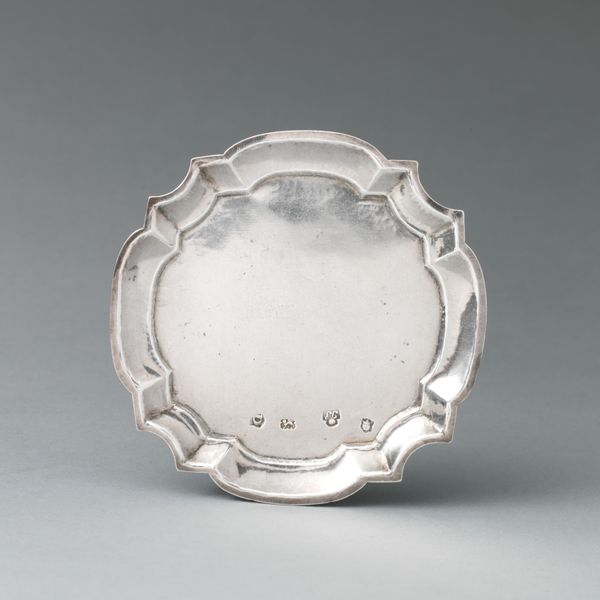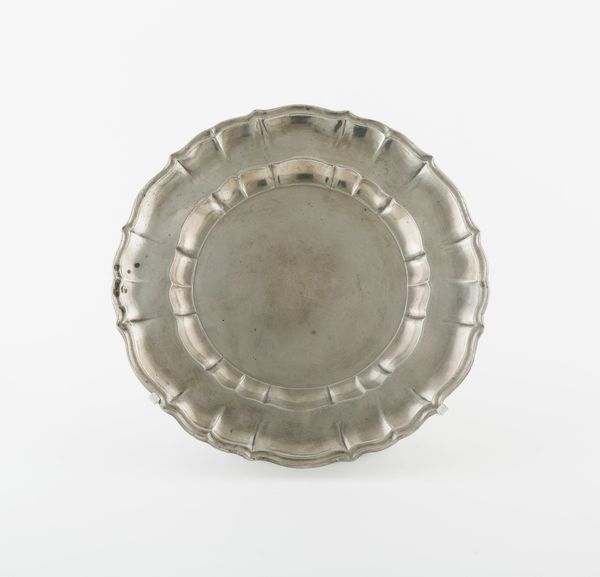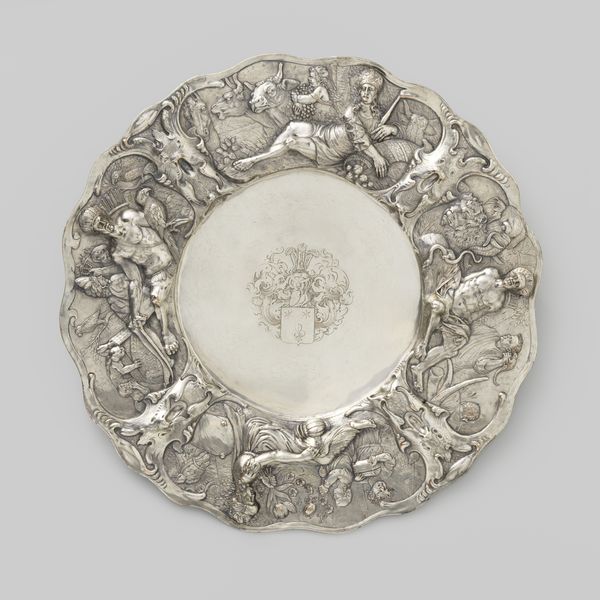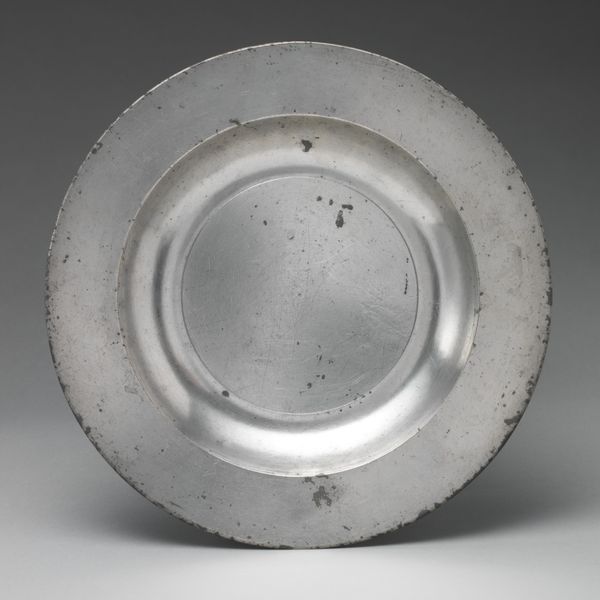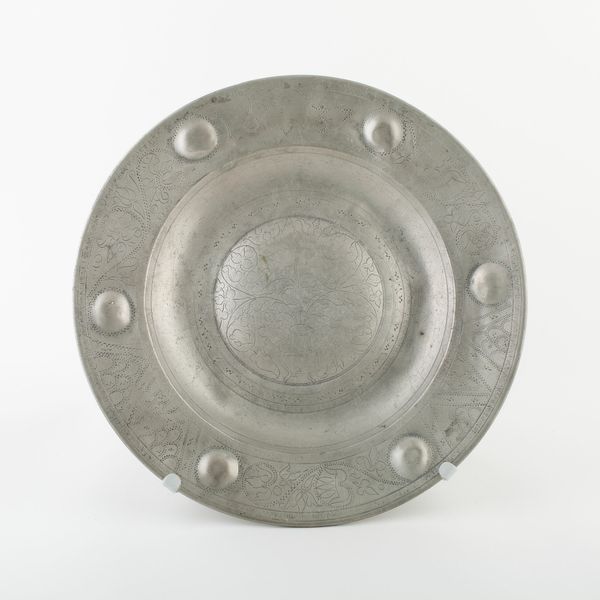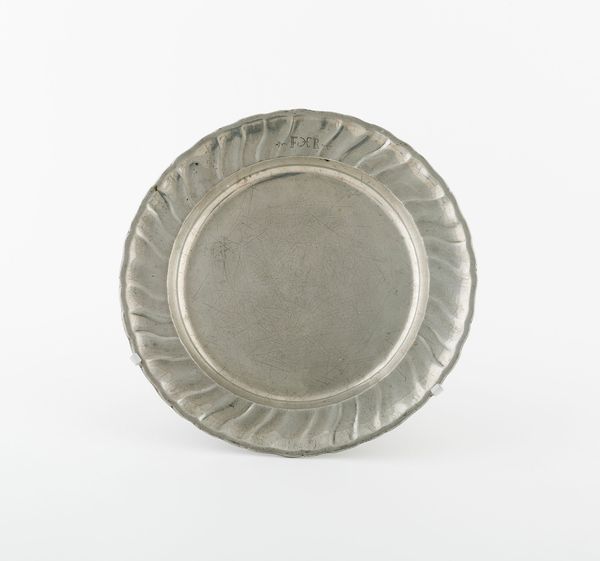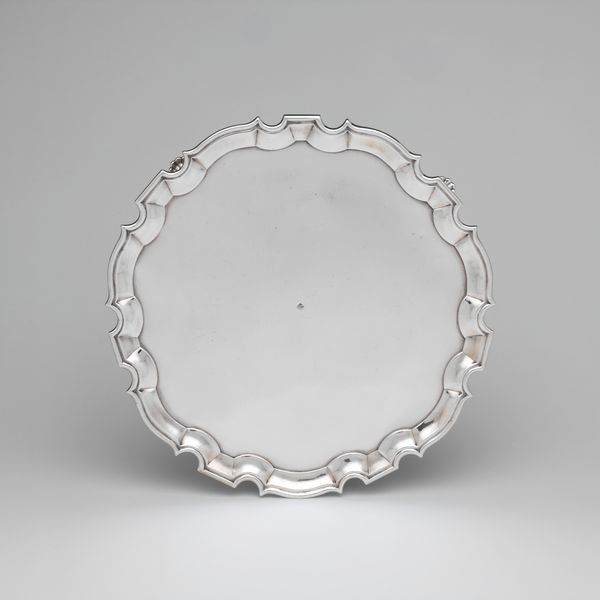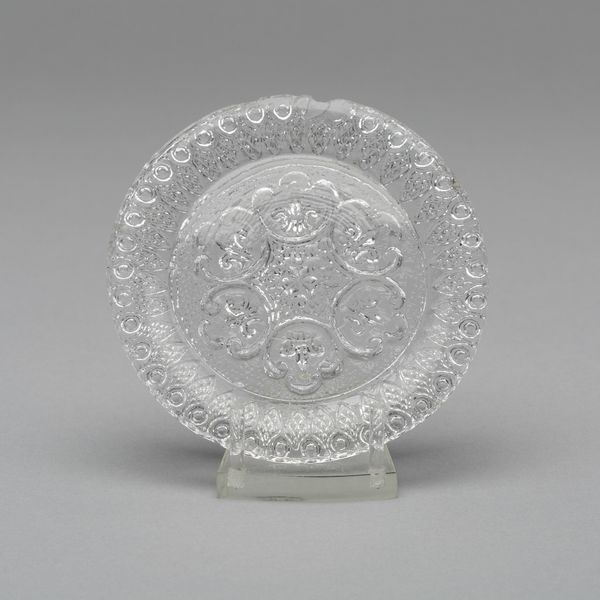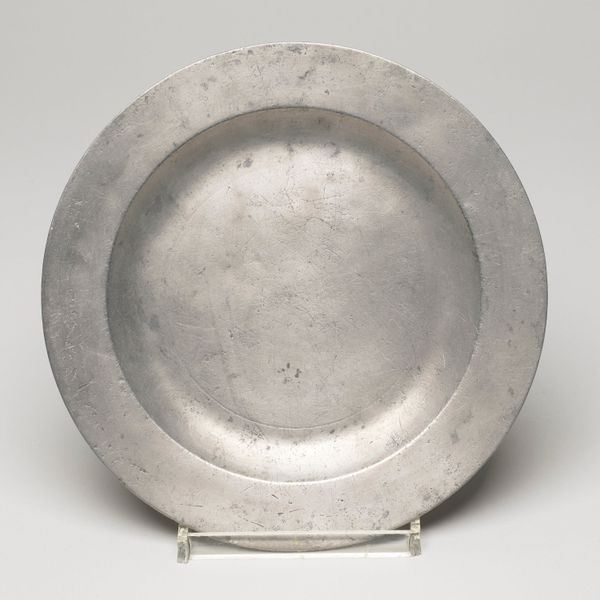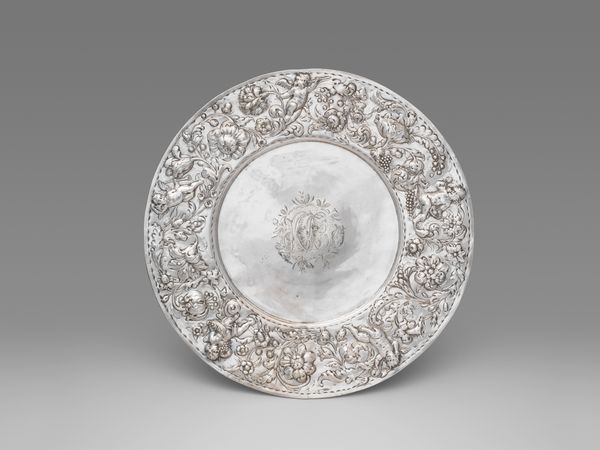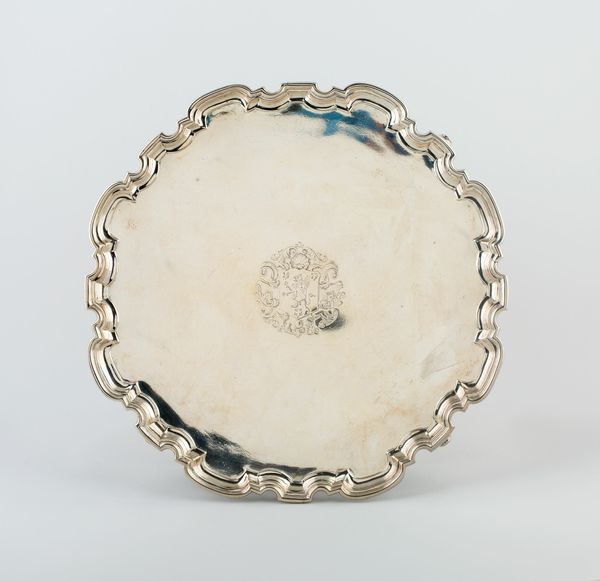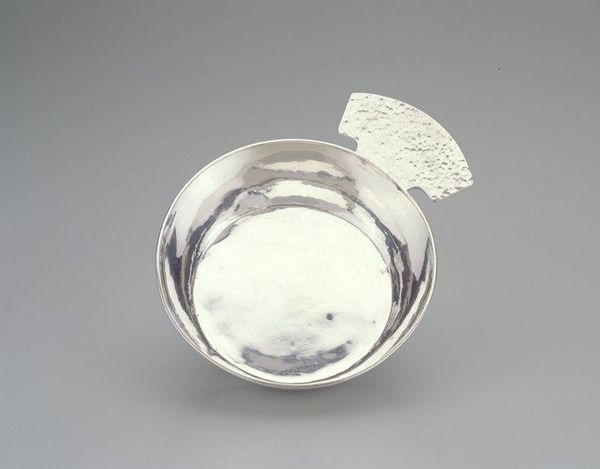
silver, sculpture
#
silver
#
sculpture
#
decorative-art
#
rococo
Dimensions: Diameter: 2 3/4 in. (7 cm)
Copyright: Public Domain
Curator: Before us, we have "Miniature Waiter," a Rococo silver piece, crafted between 1735 and 1745 by John Le Sage, held in the collection of the Metropolitan Museum. It appears to be quite small. Editor: Yes, the reflective nature of the silver almost feels lunar. Those curves and subtle undulations create a sense of quiet luxury and restrained ornamentation that suggests something hidden, intimate even. Curator: Indeed. Its creation sits squarely in the Rococo period, when such silver pieces played a significant role in the theater of aristocratic life, meant for the private drawing room rather than any grand display. They really became signifiers of status and refinement. Editor: Silver, of course, has always had a powerful association with purity, the moon, the feminine, luxury, which links to ideas of secrecy and wealth during this time. Those three small markings break the mirror surface, anchoring the piece. The repeated mark also alludes to continuity. Is this the maker's mark? Curator: Yes, hallmarks and maker's marks were vital to guarantee material quality and helped to monitor London silversmiths. Their standardization speaks volumes about increasing quality regulation as England consolidated its imperial power and financial infrastructure during that era. These weren’t merely decorative—they were a stamp of accountability. Editor: It’s fascinating how something so seemingly simple encodes a story about not only wealth and privilege but also speaks to control and order during a period associated with freedom and artistic license. In those undulating edges, you can sense this striving toward lightness that characterizes Rococo. Curator: Yes, it represents a certain point within British social history, reflecting aspirations and tastes of the moneyed class, at that moment, on the brink of enormous economic and societal transformation. Editor: Seeing the maker's mark transforms the reading, as though the object speaks not only about elite use but also to craftsmanship, history, identity. Curator: Precisely, it transcends mere decoration, encapsulating shifts in governance and aspirations. Editor: Such a small object containing big stories; so fascinating to contemplate how symbols can be both transparent and opaque, revealing and concealing different narratives with such quiet presence.
Comments
No comments
Be the first to comment and join the conversation on the ultimate creative platform.
